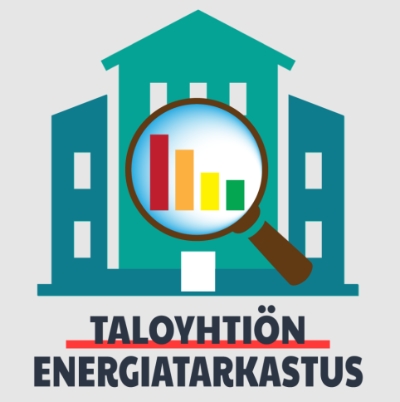Building society review on energy efficiency
An energy performance audit is a simple and inexpensive way to assess the energy efficiency of a property. The report is based on a building tour of the property, measurements taken during the tour, operational tests and an analysis of energy consumption based on consumption monitoring. The audit will normally cover one building, but if desired, several buildings can be inspected at an additional cost. The inspection is carried out during the heating season in order to get a correct picture of the heating system operation.

Contents of the inspection:
The inspection of the heat distribution system shall include:
- inspection and operational testing of the heat distribution or boiler room equipment.
- Checking the operation of the pumps.
- Checks on the settings of the control curves.
- Operational tests of valves and actuators.
- Assessment of the prepressure of expansion vessels and checking the prepressure for suitability for the property.
- Inspections of district heating cooling.
- Alarm limit checks on the heating and domestic hot water network.
- Inspection of the operation of the heat distribution network in the common areas of the property and in at least two apartments
- Measurements of indoor temperatures in two different apartments and in the common areas.
The inspection of the ventilation system includes:
- Checking the operation of the ventilation system.
- Checking the ventilation system’s operation and its suitability for the building in question.
- Checking the forced air connections against the operating diagrams.
- Verification of the antifreeze protection of the heating radiators.
- Checking the general cleanliness of the air handling unit, checking the filters.
- Checking pressure differential settings for filters.
- Checking the condition of the fans and the condition of the bearings, checking the V-belts, if applicable.
- Checking the efficiency of heat recovery, checking operation.
- For a residential IV machine, inspection will be done for two dwellings.
The inspection of the domestic hot water system includes:
- Checking the pressure level of the domestic water system.
- Determining the need for a pressure relief valve.
- Checking the temperature of the return water from the hot water circuit.
Inspection of the electrical installation including:
- Checking the operation of lights in common areas
- Checking the operation of the lights in the common areas.
- Estimation of the share of the common areas and outdoor lighting in the total energy consumption of the building.
- Lighting lifetime.
- Whether LED bulbs are suitable for the existing luminaires or whether new luminaires should be upgraded.
An audit of energy and water consumption should be included:
- consumption levels and trends of heat, electricity and water and comparison with consumption levels of similar properties (e.g. RT 103003 Condition assessment of residential property, condition assessor’s guide).
Reporting also includes recommendations for measures
Reporting will cover the following issues:
- Records of all defects and deficiencies found
- Proposals for action, both operational and investment related.
- recommended further investigation of measures where the housing company has potential to improve energy efficiency but which require further investigation
- an assessment of the possibility for the housing company to benefit from an energy grant (based on the original heating system of the building and the renovations carried out)
For a more detailed description of the content, please visit the Motiva website
The price of the inspection starts at €650 (incl. VAT 24%). The inspection generally includes an inspection of one building. Several buildings can be included for an additional fee. The inspection is carried out in accordance with Motiva’s guidelines.
As a rule, we operate in the South Ostrobothnia region. For an additional fee, we also carry out inspections in other regions.
